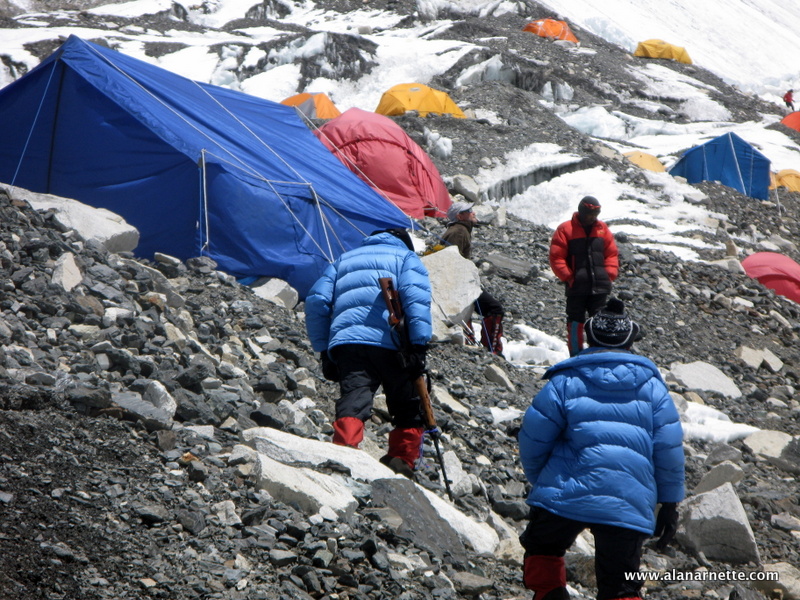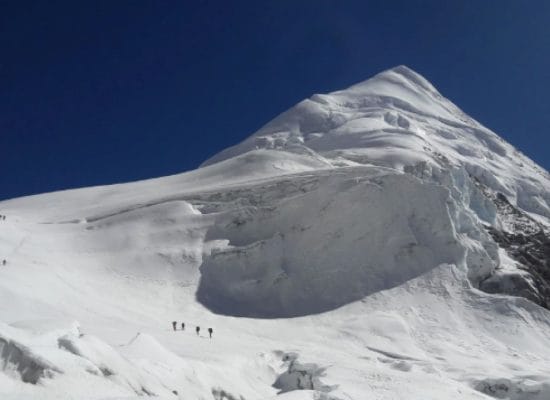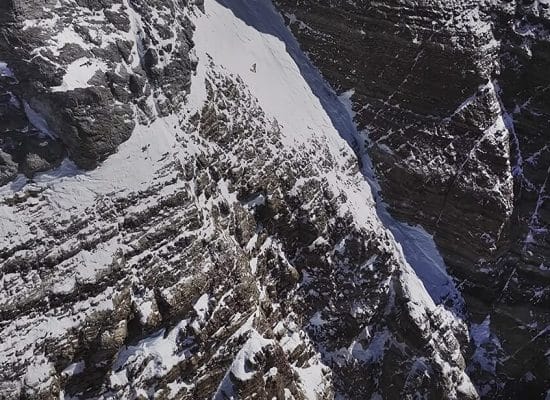Over the past few years, I’ve been predicting two things will change dramatically about climbing Everest: 1) It will get more expensive and 2) China will make it more difficult to climb from their side. A recent announcement by Chinese Mountaineering Association and Mountaineering Association of Tibet aka CTMA has shown both to be true.
China has informed operators that effective January 1, 2019, several new rules will be put in place: “expedition formation, audit, reception, management, safety and environmental protection” for mountain expeditions on Cho Oyu, Shishapangma and, of course, Everest. If implemented and enforced, this is a big deal.
I obtained a copy of the new rules and have read them myself so this is first hand reporting. There are four areas under scrutiny: Formation of Expedition, Registration Deadline, Environmental Protection, and Mountain Rescue. This is a summary of the changes and my opinion of their impact (bold emphasis is mine):
Formation of Expedition – Blocking Nepal?
There are six sub parts in this section mainly around logistics but the kickers include:
- “Strict standards will be established for all the expedition organizers or operators, especially on market access. We will cooperate actively with the Expedition companies with good social reputation, strong ability of team formation, logistic support, reliable service quality, excellent professional quality, and law-abiding.”
This suggest that the CTMA can select which companies they want to run climbs in Tibet and block others. The criteria are quite subjective and could be an invitation for corruption.
- “Expeditions climbing above 8000 meters in Tibet Autonomous Region, 1 summit climber must be accompanied 1 Nepalese Mountain guide, and each expedition must be equipped with 1 team leader.”
I’m not sure I understand this one as the overall tone of the new rules seem to be designed to block Nepal companies and promote Chinese ones but this clause suggest a 1:1 ratio of climber to Nepali i.e. Sherpa guide. Perhaps they mean Tibet or Nepal Sherpa?
- “To further strengthen the cooperation and the management of mountaineering team, and ensure the exploration companies strictly abide by relevant regulations, $5000 will be collected as mountaineering security deposits from each exploration companies at the beginning of mountaineering, and all deposit will be refunded with no safety accidents and environmental problems at the end of mountaineering.”
Again, this can be very subjective and invites fraud and corruption by the CTMA if they choose to punish an expedition by not returning their deposit. Also, strictly interrupted, does this mean if you have an “accident” you loose your $5,000?
But this is the huge change:
- “In order to ensure the healthy and orderly development of mountaineering and minimize the occurrence of mountaineering accidents, mountaineering teams which were organized in Nepal temporarily will not be accepted.”
Taken literally this means that no Nepali based company can run climbs on Cho, Shish or Everest. My fellow mountain blogger and climber himself, Stefan Nestler posted on his blog that a contingency of Nepal operators immediately went to the CTMA for clarification on this rule and were partly successful in opening Tibet to some Nepali operators. My view is this is a ticking time bomb of market access and control. China has a history of closing borders at the last minute and sometimes the mountains themselves as in Everest in 2008 for the Olympics and in 2017 during the autumn season due to a “meeting being held in Lhasa.”
Registration Deadline – February 28th
Not a big deal but “deadline for the expedition’s registration will be 28th February in spring,” so no last minute chance to join a climb.
Environmental Protection – Fee Increase per Climber
- “Standard of rubbish-collection fee will be $1500/person for Mt. Everest summit climber, $1000/person for Mt.Cho-oyu, Mt.Shishapangma, Mt. Lhakpari, North-col and Mt. Everest ABC member.”
This is a price increase as the $1,500 per person is not a deposit but rather a fee on top of the $9,500 permit fee. China now matches Nepal at $11,000 per person permit fee. However China includes more with the permit for example transportation to base camp by vehicle.
- “All the climbers, mountain guides and logistic service staff above Base Camp, must bring 8 km mountaineering rubbish to base camp in each climbing season and hand it over to the Chinese Liaison Officers”
This is something that has been on the books on both sides for a while but not enforced in Nepal. Not sure what falls under “mountaineering rubbish” definition. Unclear if it will be enforced in Tibet or used as an excuse for not refunding the $5,000 trash deposit.
Mountain Rescue – YOU Pay Unlimited Expenses?
- “Mountaineering Rescue Team of Tibet Autonomous Region and Yarlha Shampo Expedition in Tibet will jointly undertake the rescue missions in Mt. Everest, Mt. Cho-Oyu and Mt. Shishapangma during mountaineering season (Spring and Autumn).”
Similar to other big peaks around the world, this centralizes the rescue operations under one management structure. Interesting that the Chinese guide company, Yarlha Shampo Expedition, was chosen. By the way “Yarla Shampo” is also the name of a mountain in Tibet.
- “The expenses caused by the rescues shall be borne by the climbers themselves,”
This is the kicker. If you need a rescue, you are 100% responsible for paying the expenses. It will be interesting to see what the insurance companies say about this but as in many things in China, they will have little say in the matter. I guess the bottom line is don’t get in a situation where you need a rescue in Tibet!
Summary
In my mind climbing in Tibet has just become more expensive and more controlled. While the intent of some of this is good (trash, centralized rescue) others are onerous in nature and can result in unexpected expenses. Finally, climbing Everest from the North or Tibet side was historically seen as cheaper, wilder, freer and more independent than the Nepal side. Well, that ship has sailed. If you want a more independent 8,000-meter climb, Everest is no longer on the table. Take a look at Makalu or Dhaulagiri.
As always when climbing in China, climber beware.
Climb On!
Alan
Memories are Everything




